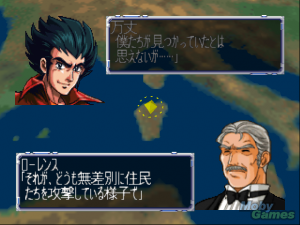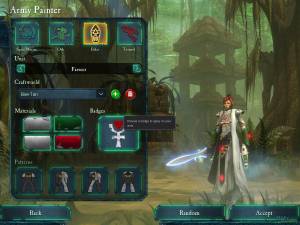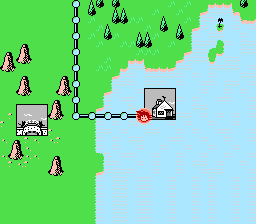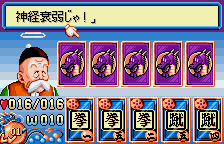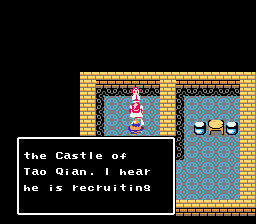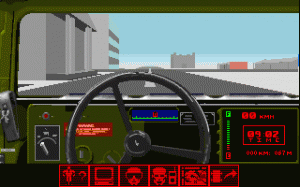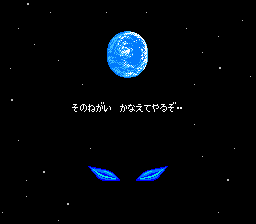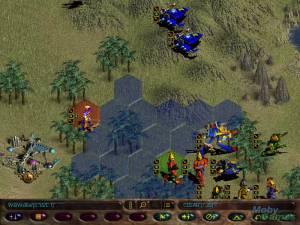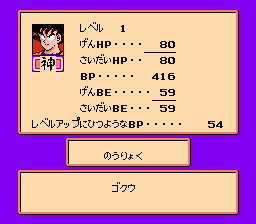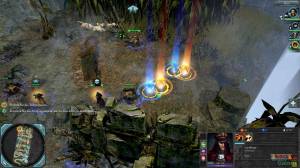Game Classification
Dai-2-ji Super Robot Taisen Winky Soft Co., Banpresto Co. (Japan), 1991
Classification
VIDEO GAMEKeywords
Purpose
Besides play, this title features the following intents:- Licensed title
Market
This title is used by the following domains:- Entertainment
Audience
This title targets the following audience:Age : 12 to 16 years old / 17 to 25 years old
General Public
Gameplay
The gameplay of this title is Game-based(designed with stated goals)
The core of gameplay is defined by the rules below:
Similar games
 The second Super Robot War is the first canonical episode, where all the basic fundaments of the story and system are set for the rest of the series.
The second Super Robot War is the first canonical episode, where all the basic fundaments of the story and system are set for the rest of the series.
The story begins when a magnificent scientist discovers that Earth is being threatened, and he decides to construct the world's mightiest robot in order to combat the threat. In order to support his plan, he sets up a secret organisation called Divine Crusaders (D.C.), which embarks on a conquest of the entire planet. Only a few heroic robot pilots from popular animated TV series stand in the way of D.C.
SRW 2 is a turn-based strategy game played on a map. What sets it apart from typical war games is the fact that each of your unit is unique, with a unique personality and traits which directly control the outcome of the story. The story is told through scripted events in the scenario and through dialogue between and during battles. This makes the game as much an RPG game as a strategy game. All battles are illustrated using small animated sequences with the robots drawn in a cutesy ?super-deformed? style.
Each side takes turn in the game to move units and fight. Each unit has a different movement value, altered by the terrain it is moving in (unless the unit is airbourne). When a unit is moved within range of an enemy, it can usually attack, though certain attacks are not available directly after moving. Weapons vary in usefulness against airbourne, ground-based or submarine units, and also have varying levels of accuracy, which is weighed against the reaction time of the target. Each unit has two different weapons, usually a remote weapon such as a gun and a hand-to-hand combat weapon such as fists or swords. Certain units trade a weapon for the ability to repair others. Another special unit is White Base, the flying carrier. Robots may enter the carrier to be carried over larger distances while being repaired at the same time and launched directly into a confrontation. White Base is both heavily armoured and in possession of weapons with a long range.
The most apparent difference between Dai-2-ji Super Robot Taisen and its forerunner is that the robots themselves are not sentient, instead their pilots are in charge. This opens up for a long narrative with the different personality types discussing the events they experience. The spiritual power system, while already introduced in the first game, is now available to all pilots. The spiritual commands allow pilots to upgrade their dodging, accuracy, movement or health during one turn, or even to repair other units. Instead of attacking, units can also try to negotiate with the enemy in order to get him or her to change sides. This command is mostly useful to those who have seen the original TV series and therefore know who are ?supposed to? switch sides.
For the first time, SRW 2 features Winkey Soft's original characters, from the Lord of Elemental universe, in addition to those licenced from Gundam (0079, Z, ZZ, F91), Mazinger (Z, Great Mazinger, Grendizer) and Getter Robo (G). [source:mobygames]
Distribution : Retail - Commercial
Platform(s) : NES (Famicom)
 Français
Français English
English






